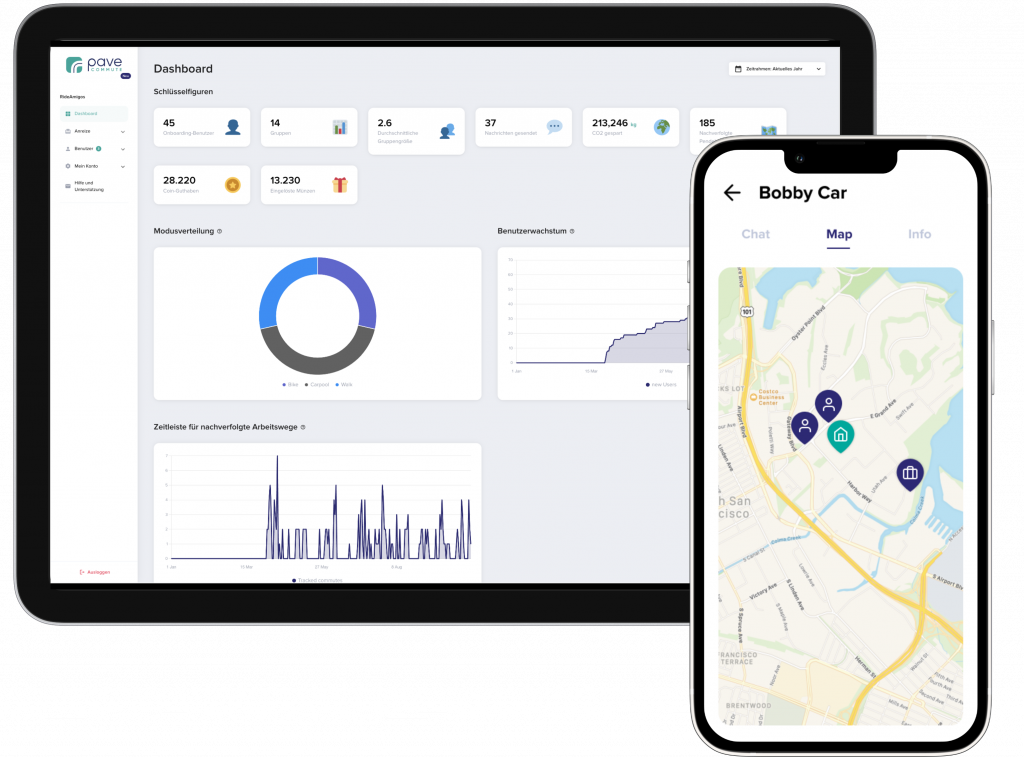Carpooling programs at universities are gaining traction as part of a broader movement toward sustainability, cost-saving, and reducing traffic congestion. With rising student enrollment and the environmental impact of transportation, many universities are turning to carpooling as a practical solution to these challenges. However, for a university carpooling program to be truly successful, it must be carefully designed to meet the needs of students, faculty, and staff while addressing logistical, environmental, and social concerns.
A successful university carpooling program is one that promotes convenience, sustainability, and community engagement, while also providing financial incentives. To understand how to build such a program, it’s important to explore the key components that contribute to its success.
1. Clear Goals and Objectives
A successful carpooling program begins with clear, measurable goals. For many universities, these goals may include reducing carbon emissions, alleviating parking congestion, and saving money for participants. Setting specific targets—for example, reducing vehicle trips by 30% over three years—helps provide direction and measurable success.
In addition to environmental goals, financial benefits for participants are a major consideration. Many students and faculty are burdened by the cost of parking permits and gas. By making carpooling an attractive option through incentives such as reduced parking fees, toll discounts, or access to carpool-only lanes, universities can encourage more people to participate.
2. Effective Program Design and Infrastructure
A key to success lies in building an effective program that is easy to navigate. Universities should consider the following design elements:
- Carpool Matching System: Implementing an online or app based carpool matching system is essential. Students, faculty, and staff should be able to create profiles and find potential carpool partners based on similar schedules, locations, and preferences. A robust platform can facilitate these connections and help participants find the right people to carpool with, making the program user-friendly and efficient.
- Designated Carpool Parking: To incentivize participation, universities should designate prime parking spots for carpool vehicles. These spaces are often located closer to building entrances, which can be a significant draw for commuters. Having reserved parking spaces ensures that carpoolers have a reliable and convenient parking option.
3. Incentives and Rewards
To motivate participation, a successful carpooling program needs to offer incentives that make the option more appealing than solo driving. Financial incentives can be a powerful motivator, but there are also other ways to encourage participation:
- Discounted or Free Parking: Many universities can offer discounted parking rates for carpoolers, or even allow free parking in special lots. For students who pay significant amounts for parking permits, this can be a strong incentive to join a carpool.
- Rideshare Apps and Technology: Some universities partner with rideshare apps like Lyft or Uber to provide discounted rides for carpoolers, or even operate their own app or platform to make it easier for people to coordinate. These systems can offer real-time tracking, set schedules, and ensure greater convenience.
- Program Recognition: Some universities offer “carpool rewards” programs where participants accrue points for each carpool trip. These points can be redeemed for prizes such as gift cards, tickets to campus events, or other perks that encourage engagement. Public recognition, such as displaying the number of miles saved or the emissions reduced by carpoolers, can also motivate participants to keep using the program.
4. Promotion and Awareness
For a carpooling program to be successful, it needs to be widely promoted and easy to access. Universities can use a combination of methods to ensure the program reaches as many students, faculty, and staff as possible:
- Campus Marketing Campaigns: Posters, flyers, and digital campaigns can help raise awareness of the carpooling program. Universities should also leverage social media platforms and email newsletters to advertise the benefits and provide easy links to sign up for the program.
- Orientation Programs and Student Engagement: Introducing carpooling to incoming students during orientation can set the tone for a culture of sustainability. Peer-to-peer outreach is also valuable, as students are often more likely to participate when they are encouraged by their friends or student groups.
- Faculty and Staff Involvement: Faculty and staff play an important role in making carpooling programs a success. Encouraging department heads or staff leaders to participate in carpooling or serve as ambassadors can help to normalize the practice. This can also set a good example for students and foster a campus-wide carpooling culture.
5. Environmental and Community Benefits
A successful carpooling program not only meets practical needs but also fosters a sense of community and collective responsibility. Reducing the number of cars on the road has clear environmental benefits, including lowering carbon emissions, improving air quality, and reducing energy consumption. Universities that emphasize these environmental benefits can appeal to students and faculty who are passionate about sustainability and climate action.
Additionally, carpooling promotes social interaction and a sense of community. It provides an opportunity for participants to connect with others on a personal level, whether it’s fellow students or colleagues. Carpooling can create lasting bonds, foster interdepartmental cooperation, and lead to the development of informal networks on campus.
6. Feedback and Continuous Improvement
Like any program, carpooling initiatives need to be constantly reviewed and adjusted to ensure they meet participants’ needs. Regular surveys, feedback forms, and data collection can help universities evaluate the program’s success and identify areas for improvement.
This could involve assessing the carpool matching system’s effectiveness, evaluating the popularity of certain incentives, or reviewing parking utilization patterns. If carpooling programs aren’t meeting their goals, adjustments such as better incentives, improved matchmaking technology, or expanded parking spaces can help increase participation.
Conclusion
A successful university carpooling program requires a combination of clear objectives, effective infrastructure, thoughtful incentives, and strong promotional strategies. By addressing practical concerns such as parking, safety, and convenience, while also emphasizing environmental benefits and community engagement, universities can create carpooling programs that serve the needs of the entire campus.
As universities continue to prioritize sustainability, reducing carbon footprints, and enhancing campus life, carpooling will play a crucial role in building more sustainable and connected communities. With the right combination of planning, technology, and incentives, universities can foster a culture of carpooling that not only benefits participants but also contributes to a more sustainable future.
For a great example of how universities are using Pave Commute, click here.
Get your university to start carpooling!
Try Pave Commute free for 30 days. No credit card required.










